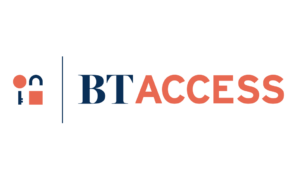Your Step-by-Step Guide to Budgeting and Forecasting
An accurate budget and forecast can help with decision-making and growth, but creating one can be overwhelming. Maybe you’ve tried in the past and it didn’t go as planned, or maybe you are wondering where to even start. Don’t worry, we’ve got you covered. Here’s how to develop a budget and forecast to guide your financial journey in the year ahead.
Step 1: Analyze Your Financial History
Look at your financial records from previous years to uncover valuable insights. Check out your income statements, identify recurring costs, and note any seasonal impacts. It’s detective work that pays off, giving you the backstory you need to write your business’s next chapter.
Step 2: Project Your Revenue
Now, let’s talk about the future. Revenue projection is part art, part science. Assess your sales pipeline and market trends, and consider the economic forecasts. Remember to account for the unexpected by creating optimistic, pessimistic, and realistic scenarios. This will help you to prepare for anything (except another Covid outbreak).
Step 3: Forecast Your Expenses
Every penny counts, so let’s count every penny. Break down your expenses into fixed and variable categories. Reflect on your past spending and plan for the future. Make sure to include any known price increases or new investments. It’s better to err on the side of caution here—overestimate rather than underestimate.
Step 4: Cash Flow Considerations
Cash flow is your business’s heartbeat. Keep a close watch by mapping out expected monthly income and expenses. Make sure to align them with your operational cycles! Maintaining a healthy cash flow ensures you’re never short of breath (or cash!) when it comes to day-to-day operations.
Step 5: Calculate Profit Margins
Profit margins are your scoreboard. They tell you if you’re winning the game of business. Keep your eye on the prize by subtracting anticipated expenses from projected revenues. Use this to set clear financial targets to keep score all year round.
Step 6: Establish a Contingency Plan
Set up a safety net because surprises are the only constant in business. Creating an emergency reserve can help to safeguard your operations against potential disruptions. A well-fed emergency fund means you can face challenges without flinching.
Step 7: Schedule Regular Reviews
Commit to periodic financial assessments. These check-ins allow you to tweak and tune your plan with changes and new information.
Step 8: Use Budgeting Software
Find software that helps you with your plan. Choose one that is easy for you to use and can help you even when your business gets bigger. The right software can enhance efficiency, minimize mistakes, and provide valuable financial insights.
Step 9: Engage with Your Community
Remember, you have a network to lean on. BrainTrust offers a space to share budgeting experiences and uncover creative financial solutions. Our community leverages the power of shared knowledge for the benefit of all members.
By walking through these steps you’re setting the stage for a banner year. Keep in touch with BrainTrust for more nuggets of wisdom as you navigate the new year. Cheers to growth, prosperity, and a new year that’s as brilliant as you are!






